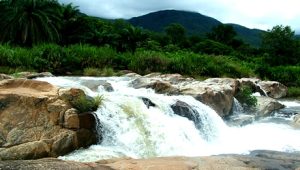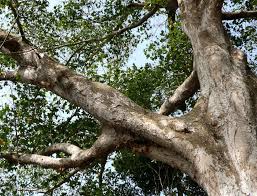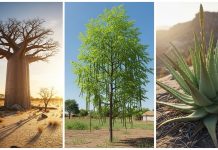Gashaka-Gumti National Park, Nigeria’s largest national park, is situated in the northeastern part of the country, adjacent to Cameroon and the Mambilla Plateau. Covering 6,400 km², it showcases Nigeria’s natural grandeur, with rugged terrains, montane forests, expansive savannah grasslands, and Nigeria’s highest peak, Chappal Waddi, at 2,419 meters (7,936 feet). The park serves as a crucial water catchment area for the Benue River, ensuring its flow even during the dry season.

Overview
Formed in 1991 from two earlier game reserves—Gashaka in Taraba State and Gumti in Adamawa State—the park was named after these historic settlements. The park’s diverse landscape includes northern savannahs and southern hilly, mountainous regions. This variation in topography gives rise to different ecosystems, including montane forests in the south and open grasslands in the north.
The park plays a vital role in preserving water catchment areas for the Benue River, which supports local communities. Additionally, it includes areas reserved for Fulani nomads who practice traditional agriculture and livestock rearing, integrating conservation with local livelihoods. The establishment of the park followed early conservation efforts in the 1970s, which were initially hindered by economic challenges and disease outbreaks. The park’s official creation in 1991 marked a significant milestone in Nigeria’s conservation history.
Flora and Fauna
Gashaka-Gumti is home to a rich array of wildlife. It boasts 103 mammal species, including the African buffalo, African elephant, chimpanzee, and the rarely-seen Adamawa mountain reedbuck. The park is also noted for its avian diversity, with over 500 bird species, making it one of Africa’s Important Bird Areas (IBA). Significant bird species include the red-faced lovebird, which is found only in this park and Bamingui-Bangoran National Park in the Central African Republic.
The park’s flora is equally diverse. It supports 426 plant species across 104 families and 306 genera. In the northern sector, you’ll find trees like Acacia and Afzelia, while the southern sector features species such as Triplochiton scleroxylon and Aubrvillea kerstingii. Notably, the red sunbird bush, an endemic species, was discovered in the Leinde Fadale forest in 2002.

Climate
Gashaka-Gumti experiences a steppe climate with temperatures ranging from 16°C (61°F) in the cooler months to 38°C (100.3°F) during the hotter periods. The annual rainfall averages around 672 mm (26.5 inches), with significant fluctuations in both relative humidity and rainfall, peaking in August.
Historical Background
The park’s conservation history began in the 1960s with efforts to protect its biodiversity from uncontrolled hunting. In 1966, a land systems survey was commissioned, followed by a recommendation in 1969 to establish a game reserve or national park. This led to the creation of three game sanctuaries in 1972. However, economic difficulties and disease outbreaks in the 1980s affected conservation efforts, which were revived with increased international support, leading to the park’s establishment in 1991.
Ecological Diversity
Gashaka-Gumti’s ecological diversity is remarkable. The park’s various environments include lowland rainforest, Southern Guinea savanna, and montane vegetation. Notable plant species include Terminalia superba, Khaya grandifoliola, and Syzygium guineense. The park also supports a wide range of wildlife, including lions, leopards, golden cats, and giant forest hogs, as well as 44 species of amphibians and reptiles.
Conservation Challenges
The park faces significant challenges, including illegal logging, poaching, deforestation, and human-wildlife conflicts. Illegal logging, especially of Rosewood, has led to conflicts between loggers and park rangers, resulting in fatalities among rangers. Additionally, activities such as grazing and the presence of invasive species threaten the park’s ecosystems. Despite these challenges, there have been positive developments, including increased forest cover and enhanced ranger patrols.
Visitor Experience
Gashaka-Gumti offers diverse activities for visitors, including wildlife observation, cultural heritage exploration, and nature-based adventures. Attractions include the Hippo Pool, the German Fort, the GGNP Museum, and the Mayo Kam River. The park is also known for primate watching, bird watching, mountaineering, and sport fishing. Visitors can enjoy well-paved trails, outdoor camping, and hot springs near Gashaka village.
Visitor Facilities
The park provides a range of facilities to enhance visitor experience. Accommodation options include premium suites and luxury rooms. Conference centres are available for groups, and guided vehicles and trained guides are provided to assist with wildlife viewing and park exploration.
Employment and Community Impact
Gashaka-Gumti contributes to the local economy by employing 277 individuals, including locals and non-locals. This workforce is integral to the park’s operation and reflects its social importance.
Challenges and Conservation Outlook
The park’s conservation efforts face ongoing challenges, including illegal activities and human-wildlife conflicts. Nevertheless, there have been promising signs of progress, such as increased forest cover and improved ranger patrols. Community involvement and support from traditional leaders are crucial for the park’s continued protection.
Final Note
Gashaka-Gumti National Park is a vital part of Nigeria’s natural heritage, renowned for its stunning landscapes and biodiversity. Despite facing significant challenges, recent improvements in conservation efforts and community engagement provide hope for the park’s future. Protecting this unique ecosystem requires ongoing support and dedication to ensure its preservation for future generations.
















